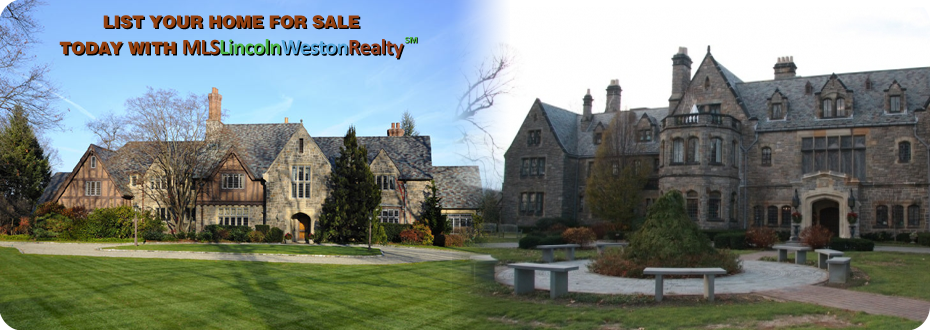January 2015 Blogs
Easy-to-overlook selling points that entice buyers — and that sellers should highlight when marketing their homes.:
If your home has gorgeous European appliances, sits on several acres, and is in the most prestigious neighborhood in town (ZIP code envy anyone?), it’s pretty easy to market your home for sale. But if you have an average house in a middle-range neighborhood, it can be a bit tough to stand out from the crowd.
However, there could very well be things you take for granted that a first-time buyer might be drawn to — as long as you mention them in the listing.
Here are seven things buyers love and sellers fail to mention.
1. Storage
When trying to avoid undermarketing, keep this in mind: showcasing your home in the best light is not just about what you love about it. You might already have outgrown the place and started to see more flaws than finer points. That’s why you’re moving … right?
The goal when you’re selling is to highlight the things that allow your home to shine in the eyes of buyers and against the competition.
So it’s important to know what buyers care about and how your home will offer a more comfortable lifestyle than the competition. First-time buyers, for example, are not simply comparing your home with other homes, they also are comparing it with the renter lifestyle and every bad rental property that inspired them to make the leap to homeowner.
A common beef of renters is that rental homes lack storage, which can lead to a frustrating, cluttered life. The vision of having a place for storing everything is a big motivator for many first-time homebuyers.
So if your home is tricked out with extra closets, pantries, or other built-in storage amenities that you plan to leave for the new owner, make sure your agent boasts about that in your home’s marketing materials.
2. Organization
In the same vein, if you’ve invested in upgrading your home with built-in closets, kitchen or garage renovations, or customized desks or bookshelves, make sure buyers know. All upgrades should be on your home’s online listing. From the first-timer craving a clutter-free existence to buyers who are moving up into a family home and want each family member’s space to have at least the possibility of order, built-in organizers can represent value and appeal to a wide range of prospective buyers.
3. Proximity
You might be thinking the right buyers for your home will be finding it online precisely because of where it’s located. So why bother calling out the property’s proximity to amenities and attractions, right? Not so fast.
First, some buyers simply might not know to search for your ZIP code if it’s just outside the one they’re actively searching in. Or they might not be aware that your hidden gem of a neighborhood also happens to be tucked within a half mile of a subway station, entrances to three freeways, and two regional parks.
Second, buyers’ proximity wishes might be different from the location requirements of their search. They might be looking at all homes in your town that meet their price range, but the fact that yours is within walking distance to a major employer or university could push you to the top of the list.
Finally, relocating buyers might not have the core knowledge of the area that would allow them to connect the dots about the property based on location fundamentals you assume everyone in the market already knows.
Never assume! If your home is well located in a desirable neighborhood, vis-à-vis major employers, universities, recreational facilities, or walkable shopping and dining districts, talk with your agent about highlighting those amenities.
4. Senior-friendly
Boomers are not necessarily looking for homes with built-in disability features, but they are often looking for homes they could live in for the rest of their lives — “aging in place” — without necessarily being isolated in senior-only communities.
That means homes with level-in entrances (no steps to the front door), single story layouts, and low-maintenance landscaping have a massive new audience. These features might otherwise not warrant a mention in a home’s marketing, but they can be worth mentioning — especially if homes near yours tend to have loads of stairs or other features that are difficult for people to navigate as they age.
Similarly, the movement toward aging in place has seen many more families moving older relatives in with them, versus moving them out to retirement homes. These extended families often are looking for homes with a well-appointed “mother-in-law” or “outlaw” unit or a second master suite located on the home’s ground floor.
If your home has multiple bedrooms with bathrooms en suite or completely independent living quarters, marketing these features to extended families is a must.
5. Energy efficiency
If your home runs entirely off the grid or implements gray water reuse and rainwater harvesting, chances are, you’ll be mentioning that.
But even buyers who aren’t hunting for a “green” home can be attracted to the budget-friendliness of energy-efficient features. So if your home is a pretty no-frills property but has a tankless water heater, dual-paned windows, and new insulation, mention it!
If you’ve managed to get your energy bills down way below what’s normal in your area, this could be a selling point you don’t want to overlook; your agent can help you strategize how best to communicate this to buyers.
6. Eco-friendly features
If you’ve configured your home to encourage greener living — beyond lower energy bills — that could warrant a mention in your marketing.
You might think things like your little organic kitchen garden, backyard compost bin, or that $50 recycling center you installed are so low in cash value that they don’t rate a line in your listing materials. But loads of buyers are attracted to these sorts of features, so why not call them out (especially if you’re in a market with tons of competition) and make buyers aware?
7. Natural, chemical-free, and hypoallergenic home maintenance
In a similar vein, if you have a hypoallergenic HVAC system or have used only nonchemical cleaning products for the last few years, you might want to call these sorts of things out as well.
Marketers say today’s consumers are careful about not just what they put into their bodies, but also what they put on and around their bodies. Your home and the cleaning and maintenance products you’ve used may implicate both “on” and “around,” so if you’ve taken care to create a home that works well for people with physical or philosophical sensitivities to common household chemicals, make sure prospective buyers know that your house won’t make them sick!







